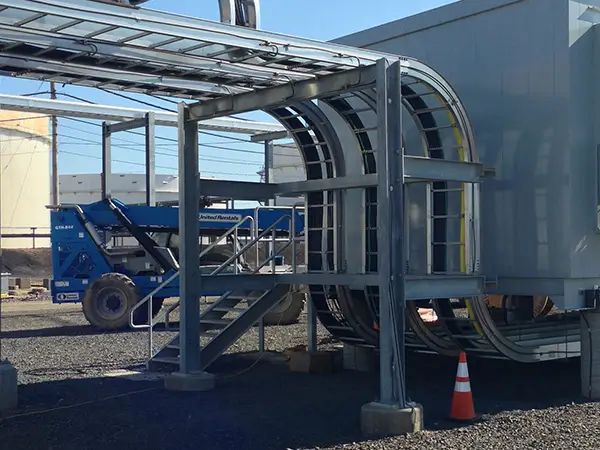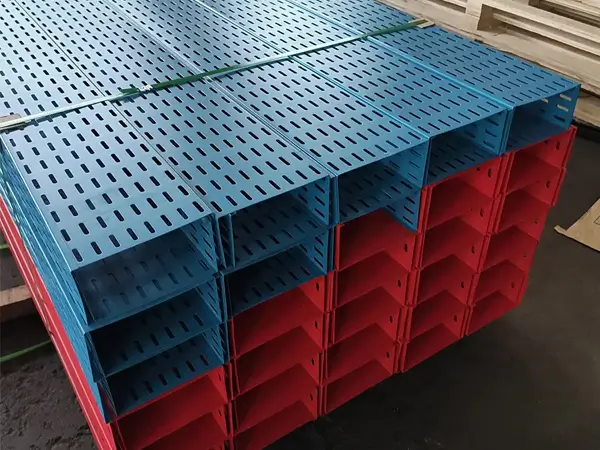Purposes of Cable Management Products
Cable Management Products are capable of supporting all types of wiring: such as
Cable Management Products are capable of supporting all types of wiring: such as

Cable trays are components of support systems for power and communications cables and wires.
A cable tray system supports and protects both power and signal cables and facilitates upgrading, expanding, reconfiguring, or relocating networks.
Most of the cable tray systems are open, allowing efficient heat dissipation and easy access for replacement and repairs. Although typically suspended from ceilings or affixed to walls, some cable tray systems are suitable for under floor use.
In the electrical wiring of buildings, a cable tray system is used to support insulated electrical cables used for power distribution, control, and communication. Cable trays are used as an alternative to open wiring or electrical conduit systems, and are commonly used for cable management in commercial and industrial construction. They are especially useful in situations where changes to a wiring system are anticipated, since new cables can be installed by laying them in the tray, instead of pulling them through a pipe.
There are several types of cable trays used for different purposes. A solid-bottom tray provides the maximum protection to cables, but requires cutting the tray or using fittings to enter or exit cables. A deep, solid enclosure for cables is called a Raceway / Trunking / Ducts.
A ventilated tray has openings in the bottom of the tray, allowing some air circulation around the cables, water drainage, and allowing some dust to fall through the tray. Small cables may exit the tray through the ventilation openings, which may be either slots or holes punched in the bottom. A ladder tray has the cables supported by a traverse bar, similarly to the rungs of a ladder, at regular intervals on the order of 100 to 300 mm known as Ladder Type cable trays.
A weight Load, maintained cable laying, allowing some air circulation. Easy entry and exit of single or multiple cables proper arrangement of cables. Slots and holes punches in the bottom of cable tray are known as Perforated type cable trays.
Above trays are connect with jointing/coupler plates to provide sequence to cable trays. All above cable trays can be covered from above to protect from dust and moisture by covers. To provide a perfect turns to cables, cable tray accessories i.e. Elbow/bend, outer, inner, tee, cross and reducers can be used. To support and for better look slotted channels, angles, threaded rods, and z-channel are used.
Aluminum: Resists corrosion; Aluminum is commonly used because it is lightweight.
Steel: Electric shielding; low thermal expansion; excellent strength-to-weight ratio.
Stainless Steel: Superior corrosion resistance; withstands high temperatures.
Fiberglass: Nonconductive; resists corrosion; lightweight.
Precautions: The most important issue is to ensure that the bend radius for the fiber-optic or coaxial cable is maintained within the standards. Combustible dust and clutter may accumulate if the trays are not routinely checked and kept clean.

Less expensive: One of the big advantages that using a cable tray has that it costs a lot less than other methods of protecting wiring on the production floor.
Maintenance: Cable are instantly visible for maintenance checks, changing of cables is easy because cables can enter or exit the tray at any point of the system.
Safety: Regular housekeeping is important for safety, as cable trays are often installed in hard to reach places.